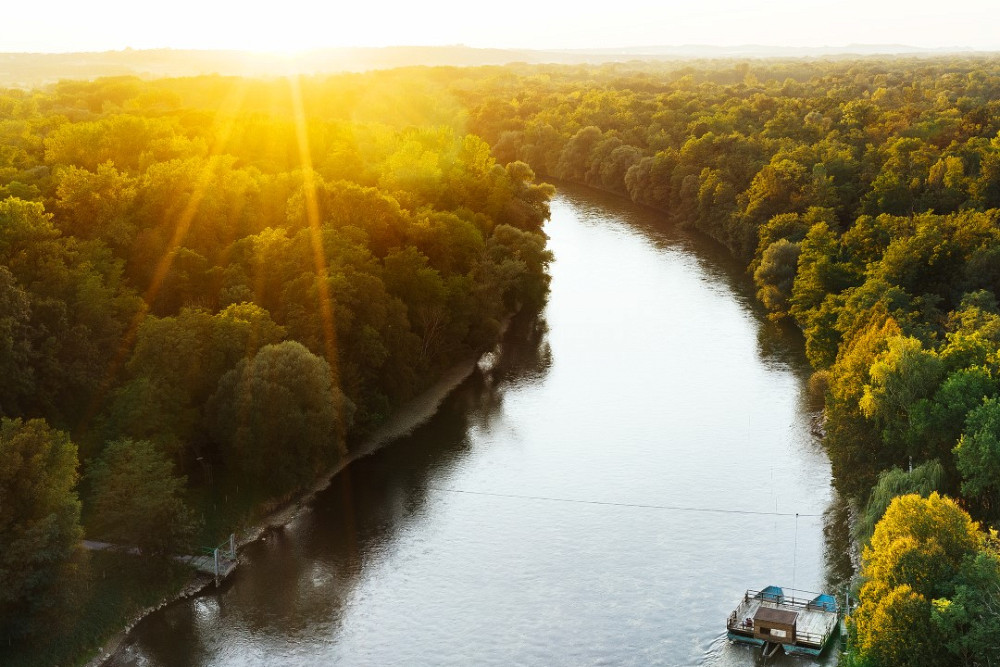UNESCO protection and the River MURA

The Mura River, which in Slovenia has a relatively well-preserved riverscape in its lower reaches and is considered an important natural asset, is included in the Natura 2000 network of nature conservation areas. UNESCO's Man and the Biosphere programme has awarded the area the status of a biosphere site at the global level as part of the wider river ecosystem of the Mura, the Drava and the Danube rivers, the latter also known as Europe's Amazon River.The Mura River is a part of the Mura, the Drava and the Danube rivers.
The name Mura is most likely derived from the Latin word "murus", meaning wall or trench, or from the Old Slavic "mur", meaning dark, black, or even from the Ancient Greek word "moira", meaning fate. In line with historical guidelines, locals like to say that the Mö(j)ra or Mü(j)ra is a 'black' and magical river.
The Mura flows into the river from an area of 14 000 km² - about 70% in Austria and 10% in Slovenia, with the rest in Croatia and Hungary. Its basin, which covers just under 1 400 km² in Slovenia - almost 7% of the country's surface area - almost completely crosses the Pomurje region. The Mura is about 440 km long, of which 96 km - less than a quarter of the distance - is covered in Slovenia. It is here that the Mura changes from an Alpine or pre-Alpine river to a lowland river, which makes its flow slower and less steep. The Drava River flows into Croatia and accounts for less than 2% of the wider Danube river system. Two thirds of the riparian area is agricultural land, less than a third is mainly flooded forest, and about 4% is inhabited land in the river area. The Mura and the wider biosphere area is home to 200 species of birds, 600 species of plants, 1 200 species of butterflies, 1 200 species of beetles, 60 species of fish, 30 species of mammals, 10 species of reptiles, 15 species of amphibians, 95 species of snails and mussels, and many other species. Some of these species are so rare and valuable that they have been protected.
Although the Mura River is a precious area of preserved biodiversity, it is much more than that, as it is a symbol of the very landscape that gave it its name. Today, it connects the two banks of the river that once separated them as a border river.
For many years, it provided a livelihood for millers (there were once 94 mill wheels on the Mura), for forders who transported people and goods before the bridges were built, for the 'büjras' who maintained the banks in a sustainable way, and for farmers, allowing them to irrigate and fertilise their fields and forests. In the past, all the inhabitants of the Mura lived in a natural way, coexisting with man, the river and the riverside nature. This is still the way we strive to manage the river in Pomurje today, which is why we avoid building dams, canals and artificial banks, strive for nature-friendly visits and take measures to protect the natural environment of the Mura, the Drava and the Danube.



